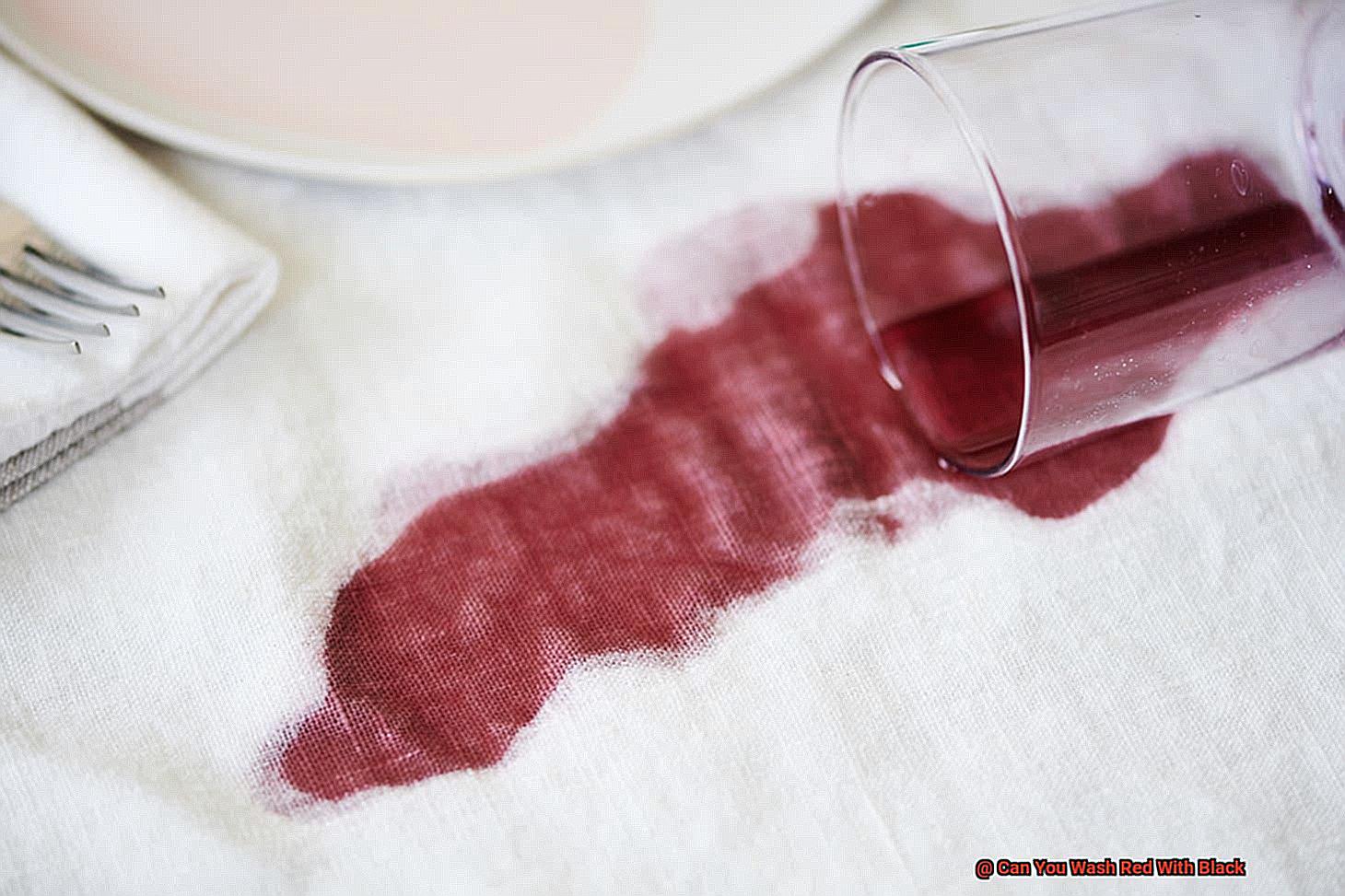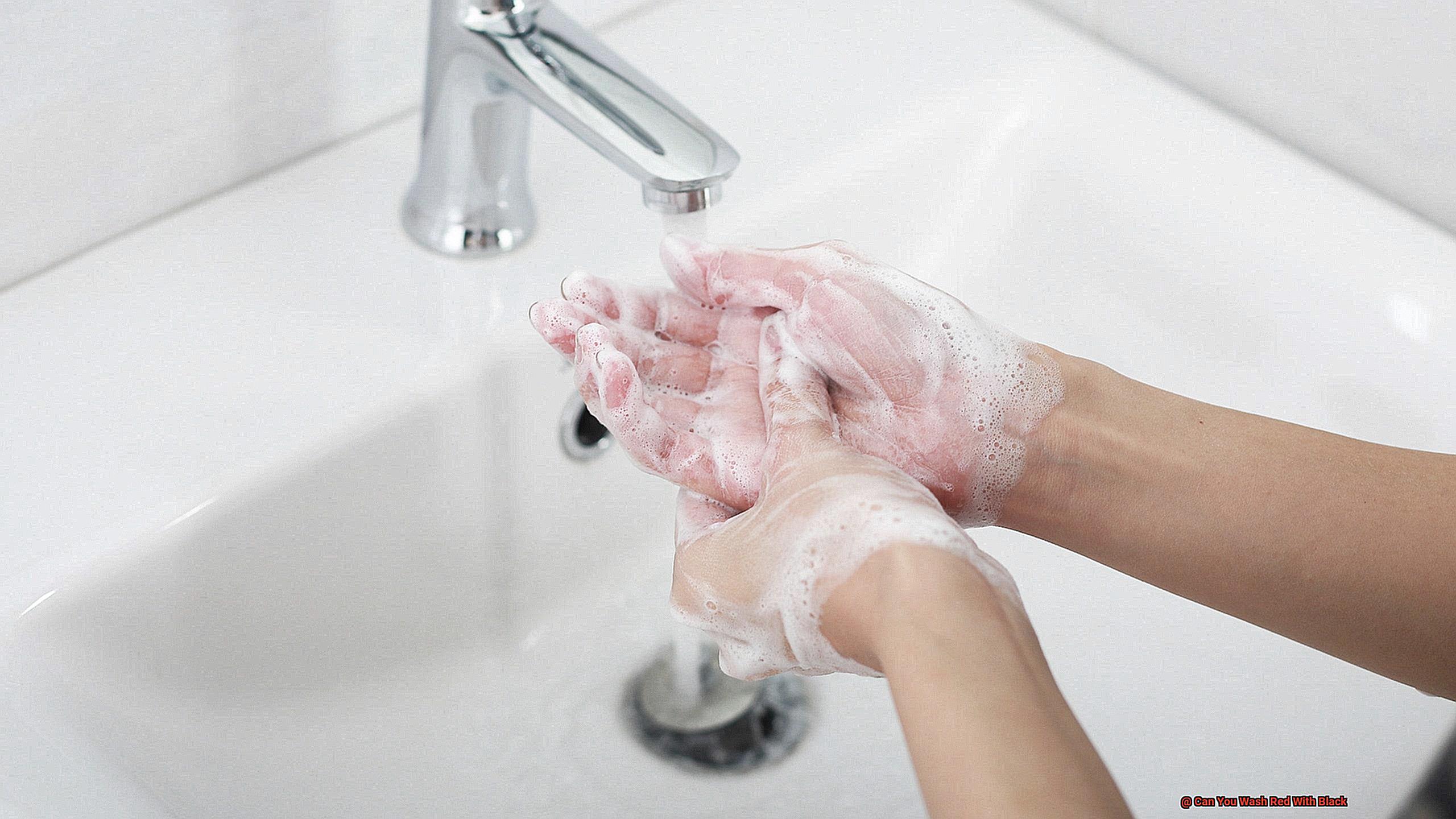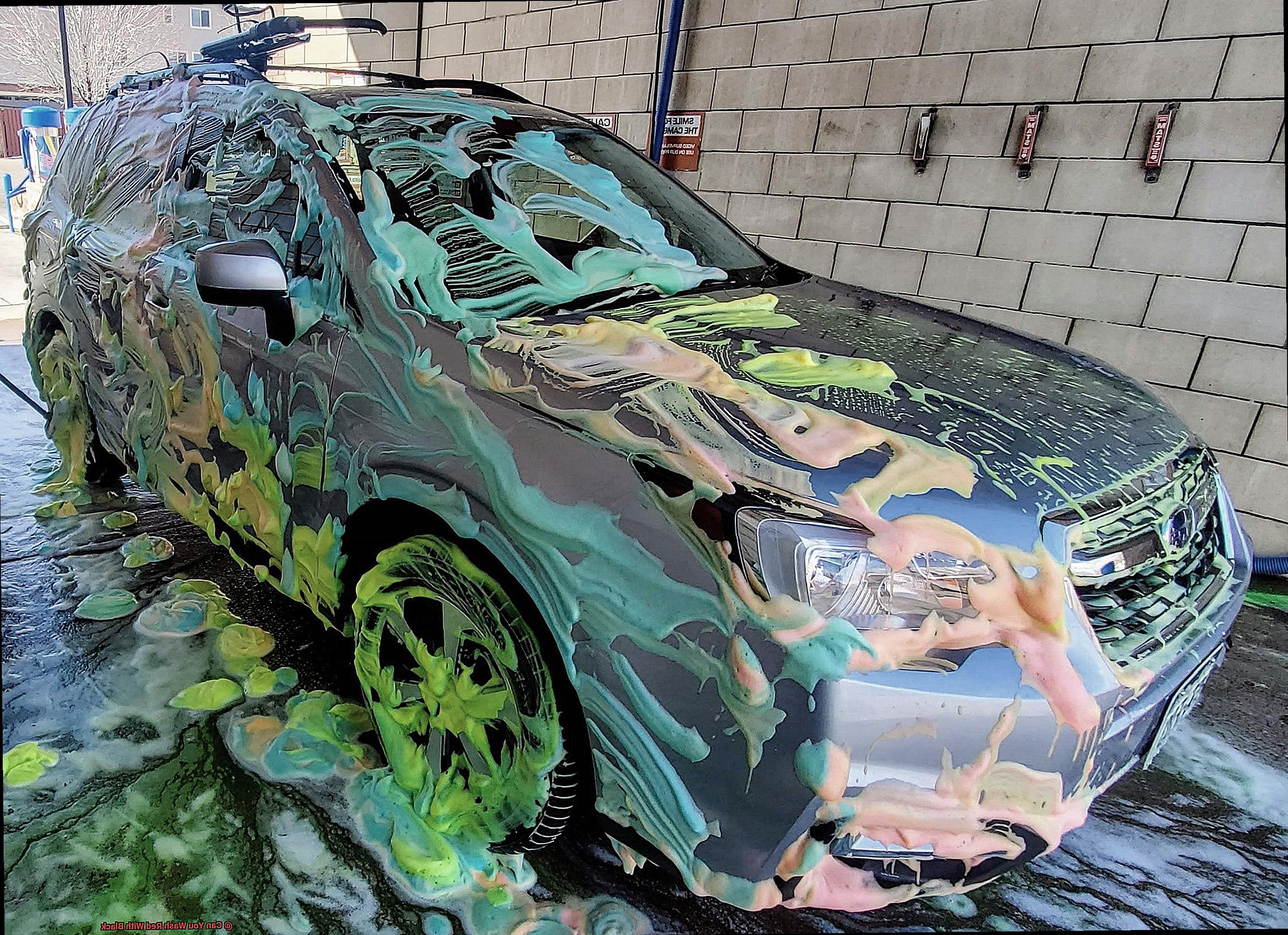Laundry day can be a daunting task, especially when you’re unsure if washing a red garment with your favorite black outfit will end in disaster. We’ve all heard the old wives’ tale that colors bleed and fabrics become ruined when washed together. But is it really true? Can you wash red with black?
The answer isn’t as simple as a yes or no. There are many factors to consider, such as the type of dyes used, fabric materials, and washing machine settings. However, understanding the science behind these factors can help you confidently wash your clothes without fear of ruining them.
In this blog post, we’ll explore the properties of different dyes and fabrics to determine whether it’s safe to wash red and black clothing together. We’ll also share tips on how to minimize color bleeding and keep your clothes looking vibrant for longer.
So before you toss that red shirt in with your black jeans, let’s dive into the details and ensure your wardrobe stays in top shape.
Contents
What is the Risk of Washing Red and Black Together?
Washing clothes can be a chore, but it’s even more challenging when you’re unsure of how to care for your colored garments. If you’re wondering whether it’s safe to wash your red and black clothes together, the answer is not that simple. There are many risks involved in washing these colors together, and it’s essential to take the necessary precautions to avoid ruining your favorite clothes.
The most apparent risk of washing red and black together is color bleeding, which occurs when the colors release their dye during the wash cycle. This can cause the black fabric to turn grey or the red to bleed onto the black, leaving a pinkish hue. To avoid color bleeding, it’s best to sort your clothes according to color before washing, and use cold water instead of hot water.
Another risk associated with washing red and black together is uneven fading. Red dyes tend to fade faster than black dyes, causing some areas of the clothing to look more worn than others. The solution to this problem is to separate your clothes by color and follow proper washing instructions.
In addition to color bleeding and uneven fading, washing red and black together can damage the fabric itself. Both colors require special care during washing, such as using gentle detergents and cold water. Failing to take these precautions can lead to holes or tears in your clothing.
If you must wash red with black clothes, there are a few things to keep in mind. Always sort your clothes according to color and use cold water instead of hot water. Furthermore, adding a cup of vinegar or using a color catcher sheet can help minimize color bleeding and protect your garments from damage.
How to Minimize Color Bleeding When Washing Red and Black
Washing clothes is one of the most basic chores we all have to do, but it can be tricky when we have different colored clothing items. It’s especially challenging when washing red and black clothes together, as the risk of color bleeding is high. But don’t worry, we’ve got you covered. Here are some tips to help minimize color bleeding and keep your clothes looking as good as new.
Sort your laundry properly
Sorting your laundry correctly is the first step to minimizing color bleeding when washing red and black clothes together. Separate your red and black clothes from lighter colors and whites. This will prevent any accidental color transfer during the wash cycle. You don’t want to end up with pink underwear or white socks turning gray. Sorting your laundry properly is a small step that can make a significant difference in preventing color bleeding.

Use cold water
Using cold water when washing red and black items together is crucial. Hot water can cause colors to bleed and fade faster. Cold water, on the other hand, helps preserve the color of your clothes and prevents color bleeding. So, always opt for cold water when washing colored clothes.
Turn your clothes inside out
Turning your clothes inside out before putting them in the washing machine is an easy way to protect the color on the outside of the fabric from rubbing against other clothes and potentially bleeding. This simple step can help prevent color bleeding and preserve the vibrancy of your clothes.

Avoid overloading your washing machine
Overcrowding your washing machine is a common mistake that many people make, which can cause clothes to rub against each other, leading to color bleeding. Instead, wash smaller loads of red and black clothing items at a time. This will ensure that your clothes have enough room to move around freely without rubbing against each other.
Consider using a color catcher sheet or detergent
If you want to take extra precautions, consider adding a color catcher sheet or detergent to your wash cycle. These products are specially designed to trap any loose dyes and prevent them from staining other clothes in the wash. Simply add the color catcher sheet to your wash cycle along with your detergent.
In conclusion, washing red and black clothing items together can be tricky, but by taking these simple steps, you can minimize the risk of color bleeding. Always sort your laundry properly, use cold water, turn your clothes inside out, avoid overloading your washing machine, and consider using a color catcher sheet or detergent.
Sorting Clothes According to Color
Then sorting clothes according to color is a must. By separating your whites from your colors and further segregating your colored garments based on their hues, you can ensure that your clothes remain vibrant and fresh wash after wash.
Sorting by color is especially critical when washing red and black clothes together. These dark colors are notorious for bleeding during washing, which can create an unappealing muddy or purplish hue that can ruin the aesthetic appeal of your clothes. To avoid this, sort them out from each other and wash them separately.
But that’s not all. It’s also essential to check the clothing labels for any specific washing instructions. By following these instructions, you can prevent any damage or discoloration to your clothes during washing. Some garments may require handwashing or dry cleaning only, while others can be safely washed in the machine.
Another helpful step is pre-treating any stains on the clothes before washing them. This step can help remove any stubborn stains that may have set in and prevent them from spreading further during the wash cycle. Using a stain remover or pre-wash solution that is safe for colored clothing can be helpful in this regard.
Using Cold Water Instead of Hot Water
Sorting laundry by color is an essential step for keeping your clothes looking vibrant and fresh. However, washing red and black clothes together can be tricky due to their notorious tendency to bleed during washing, which can result in an unappealing muddy or purple hue. But don’t worry. There is a simple solution – switch to using cold water instead of hot water.
Unlike hot water, cold water does not cause dye molecules to loosen from the fabric and mix with other colors in the wash, which leads to color bleeding and fading. Instead, cold water helps keep colors vibrant and prevents any unwanted color transfer. So next time you’re doing laundry, give cold water a try and see the difference it makes.
But that’s not all. Using cold water instead of hot water also has other benefits such as saving energy and reducing utility costs. Heating up water requires more energy, whereas cold water uses less energy and can help lower your utility bills. So not only will you be taking care of your clothes, but you’ll also be doing your part for the environment by conserving energy.
It’s essential to note that using cold water may not entirely prevent color bleeding between red and black clothes, especially if they are new or have not been washed before. It’s best to separate these colors during the wash cycle or use a color catcher sheet to absorb any dye that may bleed out.
In conclusion, switching to using cold water instead of hot water when washing red and black clothes together is a simple yet effective solution to prevent any color transfer. This practice is not only helpful for these specific colors but is also great for all your laundry needs.
Adding Vinegar to the Wash Cycle

Fear not, there is a simple solution that can be found in your kitchen: white vinegar.
Adding half a cup of white vinegar to your wash cycle can work wonders in preserving the vibrant colors of your clothes, preventing color bleeding and fading. But how does it work? The secret lies in vinegar’s natural fabric softening properties, which help remove any buildup or residue on your clothes that may cause colors to bleed. When combined with cold water, another superhero solution for preventing color bleeding, vinegar can help set the colors and keep them from bleeding into each other.
It’s important to note that vinegar should never be used with bleach or any other cleaning products that contain chlorine. This can create toxic fumes and damage your clothing. Always follow the care instructions on your clothing labels and test a small area before using vinegar on a larger scale
Using a Color Catcher Sheet
Laundry isn’t always a walk in the park – especially when it comes to colored clothes. You’ve probably experienced the frustration of accidentally mixing colors and ruining your favorite shirt or pants. But don’t worry, because the solution is simpler than you think – the color catcher sheet.
A color catcher sheet is a laundry product that saves your clothes from color bleeding in the wash. It’s designed to trap loose dyes and prevent them from transferring onto other clothes. So whether you’re washing reds, blacks, or any other color, simply toss in a color catcher sheet with your mixed load and let it work its magic.
Using a color catcher sheet couldn’t be easier. Just throw it into the washing machine with your laundry and let it do its thing. After the wash, dispose of the used sheet and enjoy your bright, stain-free clothes.
Color catcher sheets are widely available in supermarkets and online stores, so you can easily stock up on them. They come in different sizes and brands, so make sure to choose one that fits your washing needs. Some even offer scented options that leave your clothes smelling fresh after every wash.
But wait, there’s more. Did you know that color catcher sheets can also revive faded colors in older clothes? Just toss a sheet into your regular load of laundry and watch as your colors come back to life.
W7qQMrSzgAI” >
Conclusion
Laundry day can be a daunting task, especially when you’re unsure if washing a red garment with your favorite black outfit will end in disaster. But fear not, understanding the science behind fabric materials, dyes used, and washing machine settings can help you confidently wash your clothes without fear of ruining them.
Don’t be tempted to save time by combining loads of laundry – washing red and black together isn’t worth the risk. The most apparent danger is color bleeding, which occurs when the colors release their dye during the wash cycle. This can cause the black fabric to turn grey or the red to bleed onto the black, leaving a pinkish hue. To avoid this nightmare scenario, sort your clothes according to color before washing and use cold water instead of hot water.
But that’s not all – there are other risks associated with washing red and black together that you should be aware of. Uneven fading and damage to the fabric itself are just some examples. However, don’t despair. There are simple steps you can take to minimize these risks. Always sort your clothes according to color and follow proper washing instructions. Consider using a color catcher sheet or adding vinegar to your wash cycle to help prevent color bleeding.
In conclusion, keeping your clothes looking vibrant and fresh requires sorting them according to color and using cold water instead of hot water. By following these simple tips like sorting properly, checking clothing labels, pre-treating stains, adding vinegar or using a color catcher sheet, you can ensure that your clothes remain long-lasting for years to come.






